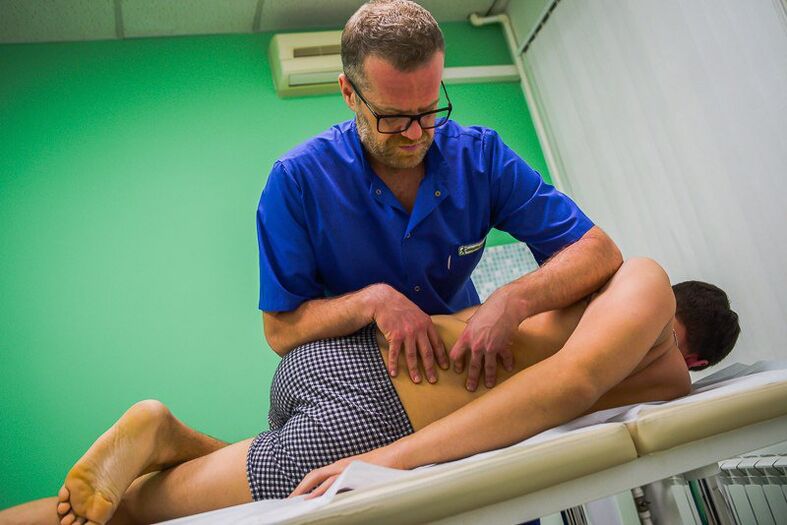
A modern man who has crossed the age limit at the age of 25 regularly feels pain in the lower back, with varying frequency and intensity. Over time, the incidence of unpleasant symptoms increases and the feeling of pain increases. The period of exacerbation is getting longer. This is a clinical picture of the development of lumbar osteochondrosis - a disease in which the cartilage tissue of the intervertebral discs is gradually destroyed. They thin out, deform and protrude. In advanced cases, without proper treatment, low back pain becomes unbearable and interferes with normal movements. Lumbar disc herniation is usually diagnosed at this stage.
It is a form of retaliation for a person for a straight posture and a vertical position of the body. During the transition to the vertical position, the center of gravity shifted, which is in the lumbar region. This means that during walking, running, jumping, torso bending and other movements, the total weight of the body puts pressure on the vertebrae of the lumbar spine. Insufficiently developed muscular framework of the back and abdominal press results in the destruction of intervertebral discs, the appearance of osteophytes and other pathological formations. And these are common causes of back pain.
Other causes of back pain
In addition to osteochondrosis and its complications, there are other causes of low back pain. Above all, various injuries that can damage both the cartilage mucosa and the vertebral body must be ruled out. These can be vertebral fractures, fractures of the spinal cord, compression fractures of the spine with displacement of spinal cord structures.
Lumbar injuries can be caused by frontal and tangential collisions, falls from a height, and a traffic accident. Injuries are often reported by athletes who are professional in weightlifting sports.
In women, low back pain can be caused by pelvic inflammatory disease. Adnexitis is the leading one. In second place is cystic ovarian disease, which causes stretching and aching low back pain that worsens at certain times of the menstrual cycle. After the age of 45, it is not uncommon for women's low back pain to be caused by cancerous processes such as uterine fibroids, ovarian and cervical cancer.
Causes of lower back pain such as inguinal hernia and kidney disease can occur in both sexes: pyelonephritis, polycystic amyloidosis, glomerulonephritis. To rule out kidney pathology, a nephrologist should be consulted and a urine test should be performed, according to Zimnitsky Nechiporenko. It helps to differentiate the diagnosis of kidney ultrasound.
In some cases, pain in the upper lumbar region is caused by intercostal neuralgia or shingles. The first state can be distinguished by touching the spaces between the ribs. In general, with intercostal neuralgia, this causes a sharp increase in pain and is characterized by unilateral localization. With shingles, visible rashes on the skin in the form of small blisters filled with a clear liquid.
More dangerous causes of back pain can be tuberculosis and sarcoma. These diseases leave little chance of recovery. They are sometimes disguised as an ankylosing spondylitis in the initial stages, with stiffness of movement and severe lower back pain in the morning. Then all symptoms disappear.
Lower back pain: what to do?
If your lower back hurts - what to do in which case, which doctor to seek help from? You can make an appointment with a therapist who, after a thorough examination, will make an initial diagnosis and prescribe further tests. Mandatory: general urine test, general blood test, ultrasound of the kidneys and urinary tract, exclusion of tumors in the abdominal cavity. Thereafter, a consultation with a neurologist, gynecologist (for women) and phthisiologist may be appointed. X-ray and tomographic methods can be used to elucidate the localization of the destructive process in the spinal column.
Prescribing treatment depends on the diagnosis. With osteochondrosis of the lumbar spine, complete treatment is only possible with manual therapies. In the initial stage, pain is relieved through traction traction, osteopathy, and therapeutic massage. Doctors then make an effort to restore the cartilage structure. Reflexology, acupuncture, and the delivery of minimal doses of drugs to the biologically active points of the human body can be used to enhance regeneration processes.
Once physiological mobility is restored, the rehabilitation treatment complex should be continued. This includes physiotherapy and massage. In addition, you should listen to the recommendations of experts regarding the organization of diet, work and rest, work and sleep. In some cases, it may be necessary to use a temporary brace to support the spine.























